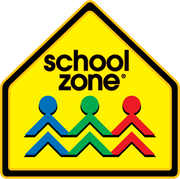Benefits of connect the dots workbooks
Connect the dots workbooks offer numerous benefits for children. Here are a few important ones:
- Fine Motor Skills: Connecting dots requires precise hand movements, which helps improve fine motor skills and hand-eye coordination.
- Number Recognition: As children follow the numbered dots, they practice recognizing and sequencing numbers.
- Concentration: Completing a connect the dots activity requires focus and attention to detail, enhancing concentration levels.
- Creativity: Once the dots are connected, children can color the resulting picture, allowing them to express their creativity.
- Problem-Solving: Figuring out the correct order of the dots helps develop problem-solving skills.
Fun ways to use connect the dots workbooks
There are many creative ways to incorporate connect the dots workbooks into your child's activities. Here are ten fun ideas:
- Learning Numbers: Use pages with different number ranges to help children practice counting. Start with 1-10 and gradually increase the difficulty. Explore our selection of workbooks for more resources here.
- Alphabet Practice: Choose pages that follow the alphabet sequence to reinforce letter recognition. Check out our ABC Dot-to-Dots Deluxe Edition Workbook here.
- Theme-Based Activities: Select workbooks that match themes such as animals, holidays, seasons, or festive occasions.
- Storytelling I: After completing the picture, encourage your child to create a story based on the image. This enhances both creativity and verbal skills.
- Storytelling II: Using silly, fantastical dot-to-dot scenes ask kids to imagine how it happened. One example is a cow in a kayak from Big Dot-to-Dots & More Workbook here.
- Group Activities: Use connect the dots workbooks in group settings, such as classrooms or playdates, to encourage teamwork and social interaction.
- DIY Art Projects: Once the dots are connected and the picture is colored, use the artwork for DIY projects like greeting cards or room decorations.
- Interactive Games: Turn the activity into a game by timing how quickly your child can complete the page, adding an element of excitement.
- Virtual Learning: Utilize digital connect the dots apps and online resources for interactive and screen-based learning, check out Anywhere Teacher.
- Reward System: Create a reward chart where completing a certain number of dot-to-dot pages earns your child a small prize or special treat.
Connect the dots for learning numbers
Connect the dots workbooks are a fantastic way to help children learn numbers. They offer a fun and engaging method to practice counting and number recognition. Here are some more ways to use them effectively:
- Count in Sequence: Encourage your child to connect the dots in order, which helps them understand the sequence of numbers.
- Skip Counting: Use dot-to-dot pages that require skip counting (e.g., by 2s, 5s, or 10s) to introduce more advanced math concepts.
- Number Matching: Pair connect the dots activities with number flash cards to reinforce number recognition.
For a wide range of workbooks and flash cards that focus on number learning, check out the School Zone website.
Connect the dots for fine motor skills
Using connect the dots workbooks can significantly enhance your child's fine motor skills. These activities require precise hand movements, which are crucial for writing and other daily tasks. Here are some tips:
- Grip Control: Holding a pencil to connect the dots helps children develop the correct grip needed for writing.
- Hand-Eye Coordination: Following the numbered dots with their eyes and connecting them with their hands improves coordination.
- Practice Patterns: Introduce patterns in dot-to-dot worksheets to make the activity more challenging and engaging. Pattern recognition is important for early math and reading.
- Use Different Tools: Try using markers, crayons, or colored pencils to make the activity more fun and to work different muscles in the hands.
Explore our selection of dot-to-dot workbooks designed to enhance fine motor skills on the School Zone website. For more resources, visit our first grade collection here.











